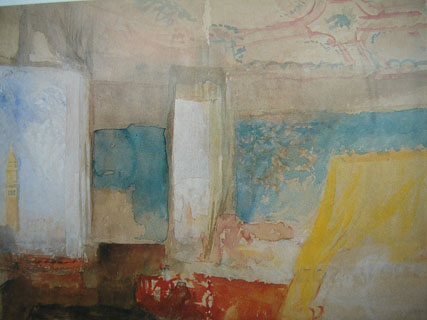To mark the start of the new year this week’s picture is an exquisite watercolour by J.M.W. Turner, of a sunrise in Venice, glimpsed through the windows of his bedroom on one of the upper floors of the Hotel Europa. Painted in 1840, it can be seen (but for one more week only) at Tate Britain’s current exhibition “Turner in Venice”. Modest in scale but hugely original, it is a scintillating example of what the painter’s contemporary John Constable meant when he said that Turner “seems to paint with tinted steam, so evanescent, and so airy.” Watercolour is a fugitive medium but this particular example is exceptionally well preserved, its limpid blues, fiery reds and dazzling yellows eyesalve for the gloom of early January.
Turner had visited Venice twice before, in 1819 and 1833, when the journey had taken him over a month. By the summer of 1840 transport had improved, but only a little. Thanks to the researches of Cecilia Powell, it is possible to trace Turner’s itinerary. On 1 August he caught one of the steam-packets which took passengers down the Thames from the centre of London and across the North Sea to Rotterdam. From there he took a steamer up the Rhine, passing through Heiddelberg and Bregenz on Lake Constance. Taking to the road, he crossed the Alps over the Brenner Pass, went on to Bolzano (where he bought several sketchbooks) and travelled along winding roads through valley and mountain until he reached Belluno – from where, at last, he embarked for Venice by boat. He arrived 19 days after he had set out.
This must have been an exhausting journey for an elderly man, a fact suggestive of the hold Venice had on his imagination. With its multitude of decayed polychrome marble palaces crumbling...


